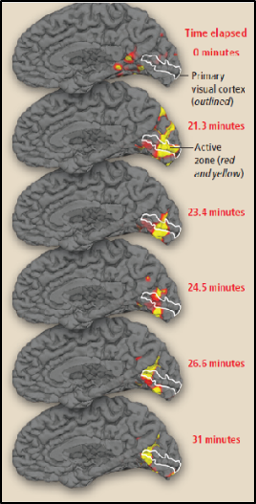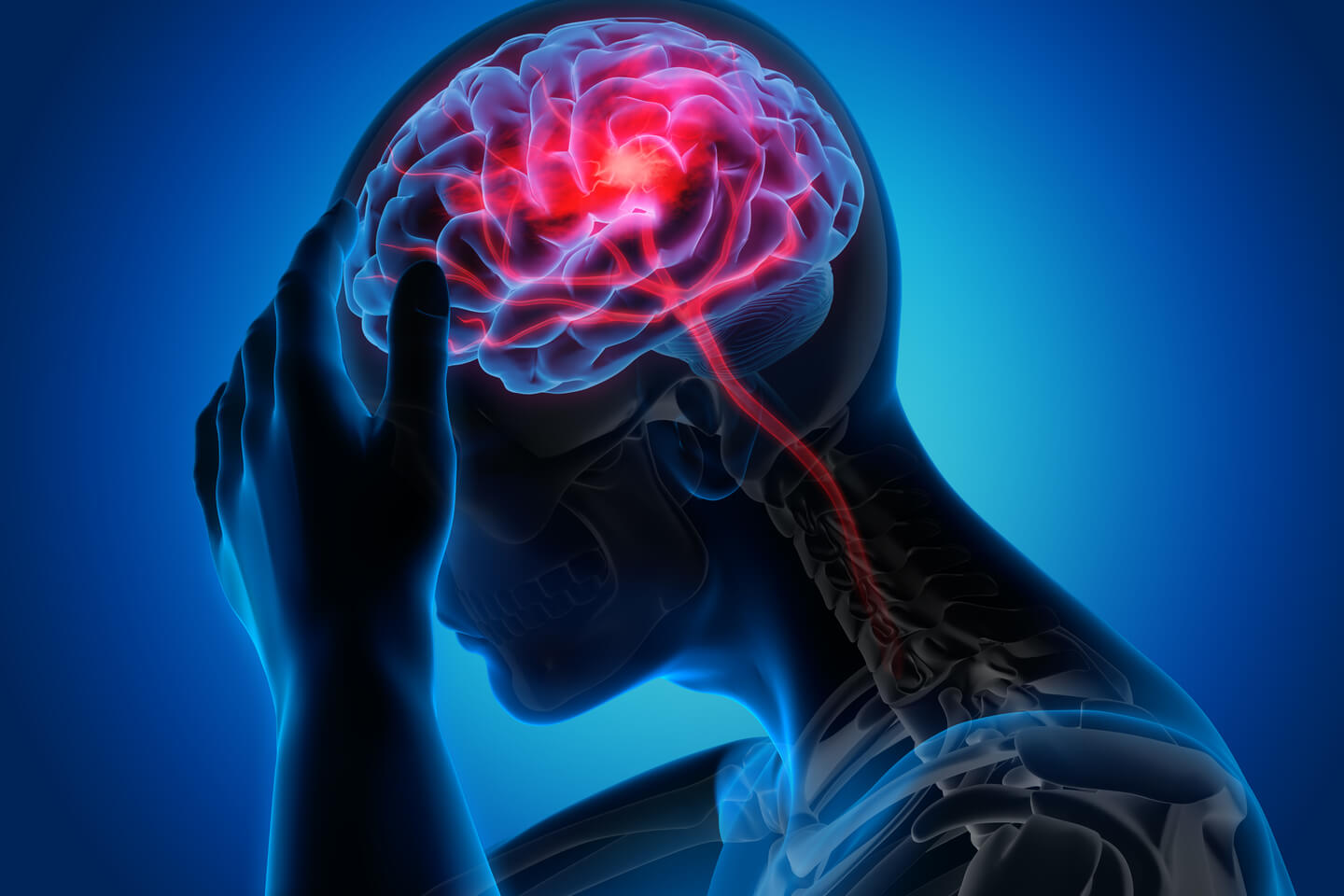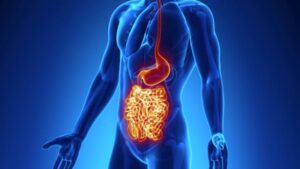This blog is written for anyone who suffers from migraines. I was spurred to write this blog because a close friend of mine suffers from severe migraines, and I wanted to see if there was any way to reduce the severity of or prevent migraines altogether. Personally, I have never had a migraine, so I can’t imagine how debilitating they can be. I don’t even get headaches, aside from the occasional mild one if I am dehydrated. It seems like I lucked out, eh? Not quite; I am stuck with IBS, so don’t feel too envious.
I am going to start the blog by talking about disabilities caused by migraines, then move onto phases of migraines, the role of genetics in migraine, the underlying causes of migraine, and finally, natural treatments for migraine.
Migraines and disability
I was shocked to find out that migraines are considered one of the four most disabling chronic medical disorders (1). Migraines and their aftermath cost the U.S. $17 billion annually due to lost work, disability payments and health care expenses (1). Migraines have proven to be very individualized. Length of migraine, location of migraine and frequency of migraines all vary from person to person. Usually, migraine victims experience one or two daylong attacks per month, but 10% get them every week, 20% get them for two-three days at a time and about 14% get them for at least half of the month (1). Migraine triggers are all over the place and include: dehydration, allergies, sleep deprivation, florescent lights, physical exertion, alcohol use, menstruation, weather changes and hunger. Anyone can experience a migraine, but about 2/3rd of victims are women between the ages of 15 and 55.
The four phases of migraines
Migraines typically have four phases, although victims don’t always experience every phase.
- Prodrome
- Victims experience this phase 60% of the time. This phase is marked by difficulty concentrating, yawning, fatigue and sensitivity to light and noise.
- Duration- a few hours to a few days.
- Aura
- Victims experience this phase 30% of the time. This phase is marked by visual illusions of sparks and lights, often followed by dark spots.
- Duration: 20-60 minutes.
- Headache
- Victims experience this stage 100% of the time. This phase is marked by extreme head pain along with sensitivity to light and sound, nausea and vomiting.
- Duration: 4 – 72 hours.
- Postdrome
- Victims experience this phase 70% of the time. This phase is marked by persistence of sensitivity to light and movement, fatigue, lethargy and difficulty focusing.
- Duration: A few hours to a few days.
Migraine onset and aura
Most migraine sufferers have symptoms that precede the actual migraine. The most common symptom is called “aura,” a word originally used to describe the sensory hallucinations that epileptics often experience before a seizure. About 30% of migraine sufferers report experiencing an aura preceding the pain and headache from the migraine. The aura often comes in the form of visual illusions of brilliant stars, sparks, flashes of light, lightning bolts, and geometric shapes. These illusions are often followed by dark spots that take on the shape of the original illusion. Sometimes the aura comes as a tingling, weakness in the body, or speech impairment.
Scientists have pinpointed the neural cause of these auras. Prior to a migraine, there is often a wave of intense nerve cell activity that spreads across the outer layer of the brain (the cortex) and reaches the area of the brain that controls vision. This intense activity cannot last forever and is followed by a wave of widespread and prolonged depression of neurons, during which the neurons cannot be excited.
What causes neurons to relax and fire? It is complicated, but it involves regulating the levels of sodium, calcium, and potassium ions within the channels and pumps. This is the reason many researchers believe that by studying these neurotransmitters, we can figure out what causes migraines and how to relieve their symptoms. After the neurotransmitter is fired, it has to rest. Before the onset of a migraine, the neurons begin firing out of control. This action requires a lot of blood. Researchers have performed brain scans during migraines and visually saw the rush of blood in the brain during the beginning stage of a migraine. After the neurons calm down (rest), they require less blood.

Above is a picture of the rapid firing of neurons that spread across the cortex. The yellow area is the firing of the neurons. As you can see, after 30 minutes, the neurons begin to rest. This sudden rush of neurons is believed to be the reason sufferers experience aura; the neurons affect the visual, sensory, and motor areas of the cortex and cause the migraine victim to see stars, sparks, flashes of light, hallucinations, etc., and experience motor and sensory changes.
Migraines may be caused by an alteration in the ion transport system
I have mentioned the ion transport system elsewhere in this blog, but I will go more in depth in this section. There is a very rare disorder (0.01% prevalence) called familial hemiplegic migraine, which occurs three times more often in females than males. This disease is a subset of migraines and causes sufferers to experience weakness in half of the body, which can last for hours, days, or weeks (in addition to other symptoms) (2). The interesting part is that scientists have found a mutation in three genes that may be responsible for this disease. Since this discovery, scientists can even use genetic sequencing to check for these genetic mutations and confirm the diagnosis of this disease. The most exciting part of the discovery is that these genetic mutations may be responsible for causing excitement in nerve cells, which causes the symptoms. And what mechanism is responsible for causing the excitement of the nerve cells? Scientists believe that it may involve the ion channels and pumps.
This information, along with years of studies, led scientists to hypothesize that the aura associated with migraines may result from channelopathy (pathy = disorder, channel disorder). Channelopathy is a newly labeled disease that is marked by disturbances in the ion transport system (involving sodium, potassium, and calcium). Disturbances of this type are responsible for other diseases, such as cardiac arrhythmias and seizures. We do not know for sure if this is the mechanism responsible for the aura experienced during migraines, but it is significant because if it turns out to play a big role, researchers can develop medications that can alter the ion transport system to prevent or decrease the severity of migraines. We should remain optimistic even though we are still years away (possibly decades) from developing and studying medications that can work in this way.
Underlying cause of migraines in layman’s terms
I really wish I could give you a nicely packaged and easy-to-understand explanation regarding the underlying cause of migraines. Unfortunately, researchers are still not sure exactly what causes a migraine. They have ideas. Blood vessels and neuronal mechanisms both likely play a large role. Overexcitement of neurons, increased blood flow, relaxation of neurons, and decreased blood flow, all play a role in causing migraines. Pain associated with migraine may result from abnormal control of pain neurons in the brainstem. Blood vessels near the sensory nerves may be responsible for many of the physiological symptoms of migraines. A major underlying cause may also involve defects in the ion transport system (involving sodium, calcium, and potassium).
Once again, as of now, these are just theories. In the future, these theories may be further proven, disproven, or adjusted, depending on findings from further research.
Are there genes that cause migraines?
Is there a genetic basis for migraines? The answer is yes, there is probably a genetic component to migraines. Scientists have used twins to look for a relationship between migraines and genetics. If there is a genetic component to migraines, it is not just one gene. In fact, there may be several genes working together that make someone susceptible to migraines. Even so, there are obviously other factors, besides genes, that contribute to migraines. Studies of twins have found a 34% to 51% genetic influence on the likelihood of developing migraine headaches, but not all of the studies have found similarities between twins.
Current migraine medication
As of now, there are very few migraine medications. Even worse, all of the medication given to migraine victims is medication that has been developed for other disorders, such as hypertension (high blood pressure), depression and epilepsy. This is a problem because these medications are not directly targeting the cause of migraines. These medications work in only 50% of migraine victims, and in that 50% of people, they only work 50% of the time. Worst of all, these medications carry very serious side effects. In fact, the possible side effects are more dangerous than having migraines (while migraines can be debilitating, there is little evidence that they actually harm the body). For these reasons, I will only be discussing natural treatments for migraines in this blog.
Natural treatments for migraines
Feverfew and Ginger
The main study using feverfew and ginger was funded by a company that makes these supplements, whose authors all had financial stakes in them, so take the results with a grain of salt. The study measured the effectiveness of feverfew/ginger compared to a placebo (3). The study found that taking feverfew or ginger at the beginning of a migraine helped migraine sufferers experience a reduction in pain, intensity, pulsating in the head, light sensitivity, sound sensitivity, and nausea when compared to the placebo. The treatment produced no side effects. The results of this study are great for migraine sufferers, but as mentioned, the source of funding of the study may have biased the study. Either way, it could not hurt to try this herbal combination of ginger and feverfew.
Remember, just because something is natural does not mean it is completely safe. Possible side effects from feverfew include abdominal pain, indigestion, gas, diarrhea, vomiting, and nervousness. Possible side effects of ginger include heartburn, diarrhea, and general stomach discomfort. Overall, these herbs are safe to take for most people.
Magnesium supplementation
Out of all the minerals and vitamins studied, magnesium may be the most proven to help with migraine relief. Magnesium is a mineral our body needs that can be found in nuts, seeds, grains, and dark leafy green vegetables. While magnesium deficiency may be common, it is nearly impossible to verify since only about 2% of our magnesium stores are measurable (the rest is found within cells and in bones and cannot be measured) (4). In one study, migraine patients were given 600 mg of magnesium per day for three months, while the other group received a placebo (5). Those in the group receiving the magnesium supplement experienced more of a decrease in the frequency of migraine attacks (33% decrease), severity of migraine attacks (47% decrease), and amplitude than those in the placebo group, who only saw a small decrease in the frequency of attacks. Those taking magnesium also experienced a positive change in the blood flow of the brain, whereas those in the placebo group saw no change.
Another study compared migraine frequency and severity in patients receiving 600 mg of oral magnesium daily for twelve weeks to those taking a placebo (6). There was a reduction in the frequency of headaches in the magnesium group, but neither group experienced a significant decrease in the duration or intensity of attacks. One study found no effect of magnesium supplementation on migraine frequency or intensity. This study may not be valid, however, because close to 50% of participants taking magnesium had regular diarrhea, so it is possible that the magnesium supplement they used was not well absorbed.
Magnesium supplementation has few side effects. The best-absorbed magnesium is either magnesium chloride or chelated magnesium. You should take the supplement with a glass of water and food if it is making your stomach upset. Try to take the pill at the same time each day. I would keep my magnesium intake below 320 mg per day. When buying a magnesium supplement, look at elemental magnesium. This is the actual amount of magnesium that you are getting per serving. Per weight, chelated magnesium will contain more elemental magnesium than magnesium chloride. If you do not want to swallow multiple large magnesium pills, you can buy liquid magnesium, which may be better absorbed than pills.
Riboflavin (Vitamin B2)
A controlled study found that 400 mg of riboflavin supplementation per day was found to decrease the frequency of headaches in migraine sufferers but did not decrease the duration or intensity of the migraines (7). Riboflavin is a B vitamin with little to no side effects. Riboflavin may help migraines, but there are very few controlled studies. There are no known adverse effects from high doses of oral riboflavin. Excess riboflavin is excreted in urine, which gives urine a yellow tint.
Niacin (Vitamin B3)
There are nine studies that measured the effectiveness of niacin in patients with migraine. Unfortunately, none of those studies had control groups, so their results do not mean much. Studies without control groups are not able to say whether or not a variable had an effect. Still, taking a niacin supplement is cheap, easy, and should have little to no side effects. Although not scientifically proven to help with migraines, it cannot hurt to give it a try.
Exercise
Many studies have found exercise to be effective at reducing the incidence of migraine (8). A study comparing exercise with a medication proven to reduce migraine incidence found that cycling indoors three times a week for 40 minutes was just as effective at reducing the incidence of migraines as the proven medication. However, the exercise was not effective at reducing the intensity of the migraines.
Pharmacological treatment of migraines
I have mixed feelings about including a section on the pharmaceutical approach to migraines. Most prescription drugs have mildly annoying to very dangerous side effects. Before taking any prescription medications for migraines, you must consider how severe your migraines are. Unless you have frequent migraines that cause you to miss work, I would not take a prescription medication for them. After reading through articles about the types of medications used to treat migraines, I decided not to include a section on them. If you want to know about specific medications, I would talk to your doctor.
Future direction of migraine medication
In the future, researchers can hopefully formulate medications that are actually for migraines and not for epilepsy or hypertension. As researchers begin to understand the physiology and chemistry behind migraines better, they will be able to make great strides toward developing migraine medication that will prevent or decrease the severity of migraines. In the meantime, your best bet is to try and take a natural supplement like magnesium, vitamin B2, or niacin. You could also increase the amount of exercise you perform. I would steer clear of current migraine medication that is not formulated specifically for migraines, since the side effects outweigh the benefit of taking the medication. If you suffer from migraines, try to keep optimistic. Science has come very far towards understanding exactly what causes a migraine.
Sources
- Dodick, D. W., & Gargus, J. J. (2008). Why migraines strike. Scientific American, 299(2), 56-63.
- Wikipedia- migraines
- Cady, R. K., Goldstein, J., Nett, R., Mitchell, R., Beach, M. E., & Browning, R. (2011). A Double‐Blind Placebo‐Controlled Pilot Study of Sublingual Feverfew and Ginger (LipiGesicTMM) in the Treatment of Migraine. Headache: The Journal of Head and Face Pain, 51(7), 1078-1086.
- Sun-Edelstein, C., & Mauskop, A. (2009). Role of magnesium in the pathogenesis and treatment of migraine. Expert review of neurotherapeutics, 9(3), 369-379.
- Köseoglu, E., Talaslıoglu, A., Gönül, A. S., & Kula, M. (2008). The effects of magnesium prophylaxis in migraine without aura. Magnesium Research, 21(2), 101-108.
- Peikert, A., Wilimzig, C., & Köhne-Volland, R. (1996). Prophylaxis of migraine with oral magnesium: results from a prospective, multi-center, placebo-controlled and double-blind randomized study. Cephalalgia, 16(4), 257-263.
- Boehnke, C., Reuter, U., Flach, U., Schuh‐Hofer, S., Einhäupl, K. M., & Arnold, G. (2004). High‐dose riboflavin treatment is efficacious in migraine prophylaxis: an open study in a tertiary care centre. European Journal of Neurology, 11(7), 475-477.
- Varkey, E., Cider, Å., Carlsson, J., & Linde, M. (2011). Exercise as migraine prophylaxis: a randomized study using relaxation and topiramate as controls. Cephalalgia, 31(14), 1428-1438.





I once saw here in office someone who couldnt even stand up due to this illness. I guess there is no cure for it, just some things and procedures to minimize pain.
Interesting….